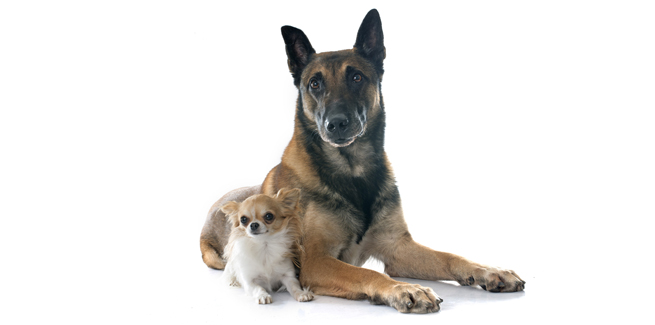Study: Different breeds mean different brains

It turns out that while breeding dogs to be anything from great hunting dogs to gentle companion animals, we’ve artificially reshaped their brains.
That’s according to a new study that found key anatomical differences in dogs’ brains are linked to the behaviors those dogs were bred to perform.
“These behavioral differences must be the result of underlying neural differences,” the study authors write, “but surprisingly, this topic has gone largely unexplored.”
Until now.
The research team looked at magnetic resonance imaging (MRI) scans from 62 dogs belonging to 33 different breeds. The dogs had been scanned at the University of Georgia Veterinary Teaching Hospital as part of regular neurological evaluations and were not scanned as part of the study. The dogs were all found to be free of any neurological abnormalities and subsequently released—leaving the researchers with a goldmine of data and the inspiration for their study.
The authors note that the differences in brain structure are “not simply the result of variation in total brain size, total body size, or skull shape,” but rather due to what purpose a particular breed serves. This means that dogs’ brains change their shape and size based on whether they’re used for specializations, such as guarding, companionship, sight hunting, or scent hunting.
One example, according to Erin Hecht, PhD, a neuroscientist studying dog cognition at Harvard University and lead author of the study, involved dogs bred to be good at flushing out and visually tracking animals like birds through an environment, such as golden retrievers.
When the team compared these dogs to other breeds, they appeared to have key differences in brain regions linked to coordination, eye movement, and spatial navigation—everything you’d need to be a good tracker.
Another example: the scans of dog breeds used for cognitively complex and demanding activities such as herding (think border collies) or for military and police work (German shepherds) showed that they have larger prefrontal cortexes—the part of the brain responsible for problem solving.
Nearly all of the variation the researchers observed in the scans occurs in the terminal branches of the canine phylogenetic tree (a kind of genetic map that tracks where in the course of evolution various changes occur), which the researchers say indicates that these neural changes are fairly recent, in evolutionary terms.
In other words, they’re result of selective breeding, and while humans have bred dogs for specific traits for millennia, selective breeding is a fairly recent phenomenon that’s only a couple of hundred years old.
Today there are more than 400 distinct breeds of dogs in the world, so clearly we’ve been making up for lost time.
Photo credit: © iStock/cynoclub



